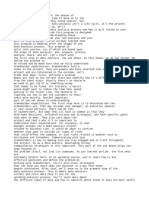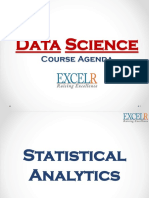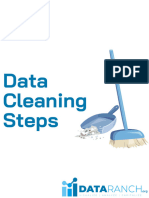0% found this document useful (0 votes)
28 views1 pageData Analysis Course Step by Step
This document outlines a Step-by-Step Data Analysis Course covering key topics such as data collection, cleaning, exploration, visualization, and analysis tools. It includes statistical analysis, predictive modeling, and effective communication of results. The course culminates in a real-world project that integrates all learned skills from data cleaning to reporting.
Uploaded by
mondaltapan934Copyright
© © All Rights Reserved
We take content rights seriously. If you suspect this is your content, claim it here.
Available Formats
Download as PDF, TXT or read online on Scribd
0% found this document useful (0 votes)
28 views1 pageData Analysis Course Step by Step
This document outlines a Step-by-Step Data Analysis Course covering key topics such as data collection, cleaning, exploration, visualization, and analysis tools. It includes statistical analysis, predictive modeling, and effective communication of results. The course culminates in a real-world project that integrates all learned skills from data cleaning to reporting.
Uploaded by
mondaltapan934Copyright
© © All Rights Reserved
We take content rights seriously. If you suspect this is your content, claim it here.
Available Formats
Download as PDF, TXT or read online on Scribd
/ 1

























































